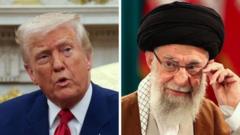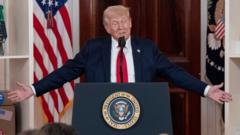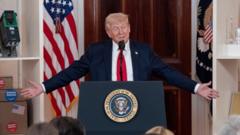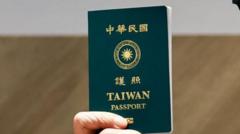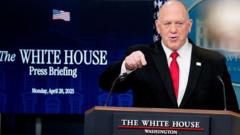Amidst rising fears of a second trade war, Chinese businesses navigate the uncertain landscape shaped by Trump's possible tariffs, reconsidering operations and relationships with U.S. partners.**
Battle Looms Again: Trump’s Tariffs Raise Concerns for Chinese Manufacturers**
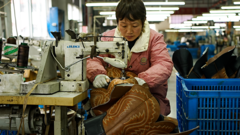
Battle Looms Again: Trump’s Tariffs Raise Concerns for Chinese Manufacturers**
As Trump re-enters the political arena, Chinese factories brace for the imminent repercussions of renewed tariffs that could reshape trade dynamics.**
As the political landscape shifts with the return of Donald Trump to the White House, the specter of renewed tariffs looms heavily over Chinese manufacturers. Factories are now anxiously anticipating the consequences of potential levies on goods produced in China, reminiscent of the trade war that significantly impacted the economy six years prior.
Within one factory in Jiangsu, the sounds of leather processing fill the air as workers diligently produce cowboy boots—a symbol of American culture. However, as sales manager Mr. Peng highlights, the once-thriving business has already been shaken by past tariff rounds, drastically cutting their annual production from a million pairs to a challenging reality of reduced orders.
The proposed 10% tariff that Trump threatens to implement could take effect shortly, adding further strain to an already sluggish Chinese economy that depends heavily on exports. While Trump’s initial offensive in the trade war saw numerous American companies shifting operations to other countries such as Vietnam, the clock may be resetting for the conflict, as businesses assess their next moves.
Some firms are already contemplating relocating to Southeast Asia to mitigate tariff impacts, with the risk of losing skilled workers integral to their operations. The sentiment among factory workers, many of whom have dedicated decades of service, reflects a complex intersection of employment loyalty and economic necessity.
While Trump potentially utilizes tariffs as leverage in broader geopolitical strategies, American companies like Walmart and Costco are already seeking reassurances about future production, pressuring their suppliers to consider overseas options. The stakes are high for factory owners and workers alike, with the looming realization that tariffs often shift the burden onto them.
Despite mounting pressure from the U.S. government, Chinese manufacturers are showing resilience and adaptability by exploring new avenues of production beyond their borders. Places such as Cambodia are becoming attractive destinations, with current Chinese-run garment factories flourishing due to the exodus.
China is leveraging its investments globally to secure its trade relationships, particularly through initiatives that bolster economic ties with Southeast Asia. However, while production may be shifting, a significant portion of materials still flows from China, preserving its pivotal role in the global supply chain.
As Mr. Peng and his colleagues await clarity on tariff policies, hopes linger for a diplomatic resolution that will avoid further deterioration of US-China relations. The potential consequences of these tariffs could reshape not just individual factories but the entire economic landscape for years to come.

